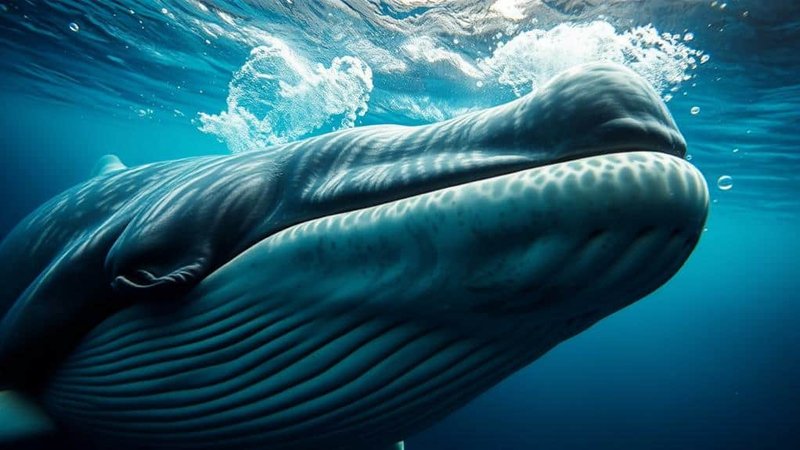
Diving into the world of whales, it’s incredible how much we are still uncovering about their navigation and communication skills. From the rhythmic songs of humpback whales to the echolocation buzz of orcas, these animals have developed sophisticated methods to connect with each other and understand their surroundings. Understanding how these graceful giants make their way through the ocean and keep in touch with their kin is a journey worth taking.
The Basics of Whale Navigation
Navigating vast oceans isn’t an easy feat, but whales have some incredible tools at their disposal. One of the main ways they find their way is through environmental cues. Just like how we might rely on landmarks to find our favorite coffee shop, whales use the Earth’s natural features. They can detect things like ocean currents, temperatures, and even the magnetic fields generated by the Earth itself. This ability helps them travel long distances during migration.
Let’s not forget about their amazing sense of hearing. Unlike humans, who rely heavily on sight, whales use sound to navigate. They emit calls that bounce off objects, allowing them to “see” their surroundings through echolocation. It’s a bit like using sonar—think of a bat flying in the dark, sending out sounds to locate its dinner. Whales use echoes to figure out how far away things are and what they might be.
How Whales Use Echolocation
Echolocation is a game changer for many whale species, especially those that hunt in deep waters like sperm whales. Here’s how it works: when a whale emits a sound wave, it travels through the water until it hits an object. That sound wave then bounces back to the whale. By analyzing the time it takes for the echo to return and its intensity, the whale can determine the shape, size, and distance of what’s ahead.
Imagine you’re swimming in a pool and you close your eyes while tossing a ball. You can hear the sound of the ball splashing and know where it is. Whales do something similar but on a much larger scale. This echolocation ability allows them to hunt for food and avoid obstacles in their environment, making it essential for their survival.
The Role of Songs in Whale Communication
You might be surprised to learn that whales “sing.” Humpback whales are especially famous for their complex songs, which can last for minutes and reach incredible distances underwater. These songs aren’t just random sounds; they have patterns and rhythms that can change over time. Scientists believe that these vocalizations serve multiple purposes, from attracting mates to establishing territory.
Think of it like a concert where every whale has its own record to play. When one whale starts a new tune, others might join in, creating a symphony of sounds. Researchers have even found that these songs can evolve, much like how pop music changes over the decades. What’s fascinating is that all the whales in a certain area may sing slightly different versions, hinting at a vibrant community culture within the ocean.
Whale Social Structures and Communication
Whales are social beings, and their communication goes beyond just songs and sounds. Many species, like orcas, live in close-knit family groups called pods. These pods are often made up of mothers, offspring, and other relatives. When a whale in a pod senses danger or finds food, it communicates with the others through a series of clicks and whistles, alerting them to the situation.
This social behavior is crucial for survival. For example, when hunting, they display remarkable teamwork. An orca pod might surround a school of fish, coordinating their sounds and movements to trap their prey. It’s a bit like how a team might strategize during a big game, ensuring everyone plays their part for success.
Challenges in Navigation and Communication
While whales are well-equipped for their environment, they also face challenges. One major hurdle is noise pollution from ships and industrial activities. These sounds can interfere with whale communication, making it hard for them to hear each other. It’s like trying to have a conversation in a crowded café—distracting and tough to focus.
Additionally, climate change is altering ocean conditions, which can impact migration patterns. If the waters get too warm or the food sources shift, whales may struggle to find their way. This threat to their navigation is a stark reminder of how interconnected our world is, and it reinforces the need to protect these incredible creatures and their habitats.
Conservation Efforts and Future Directions
Understanding how whales navigate and communicate is essential, especially when considering conservation efforts. Many organizations are dedicated to protecting whale habitats and reducing noise pollution in the oceans. For instance, initiatives to create marine protected areas can help ensure that whales have safe routes for migration and ample food sources.
Moreover, technology plays a vital role in these conservation efforts. Scientists are using underwater microphones to listen to whale songs and track their movements, which helps them gather valuable data. With this information, we can better understand the challenges these creatures face and work towards solutions that ensure their survival for generations to come.
Whales are remarkable navigators and communicators, showcasing the beauty and complexity of life in the ocean. Their ability to use echolocation and songs not only highlights their intelligence but also emphasizes the need for us to understand and protect these magnificent creatures. With the challenges they face from environmental changes and habitat disruption, it’s crucial that we advocate for their conservation.
By learning about how whales navigate and communicate, we deepen our connection to these animals and inspire action to safeguard their future. Just think—every time you hear a whale song, it’s like a message from the deep, filled with stories, connections, and the echo of life in the vast ocean.

